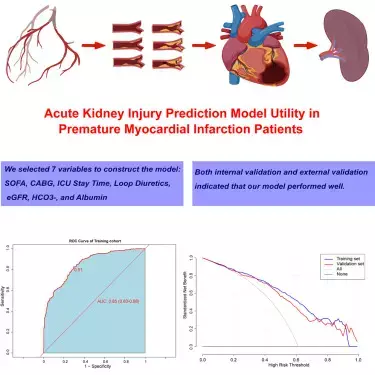- Home
- Medical news & Guidelines
- Anesthesiology
- Cardiology and CTVS
- Critical Care
- Dentistry
- Dermatology
- Diabetes and Endocrinology
- ENT
- Gastroenterology
- Medicine
- Nephrology
- Neurology
- Obstretics-Gynaecology
- Oncology
- Ophthalmology
- Orthopaedics
- Pediatrics-Neonatology
- Psychiatry
- Pulmonology
- Radiology
- Surgery
- Urology
- Laboratory Medicine
- Diet
- Nursing
- Paramedical
- Physiotherapy
- Health news
- Fact Check
- Bone Health Fact Check
- Brain Health Fact Check
- Cancer Related Fact Check
- Child Care Fact Check
- Dental and oral health fact check
- Diabetes and metabolic health fact check
- Diet and Nutrition Fact Check
- Eye and ENT Care Fact Check
- Fitness fact check
- Gut health fact check
- Heart health fact check
- Kidney health fact check
- Medical education fact check
- Men's health fact check
- Respiratory fact check
- Skin and hair care fact check
- Vaccine and Immunization fact check
- Women's health fact check
- AYUSH
- State News
- Andaman and Nicobar Islands
- Andhra Pradesh
- Arunachal Pradesh
- Assam
- Bihar
- Chandigarh
- Chattisgarh
- Dadra and Nagar Haveli
- Daman and Diu
- Delhi
- Goa
- Gujarat
- Haryana
- Himachal Pradesh
- Jammu & Kashmir
- Jharkhand
- Karnataka
- Kerala
- Ladakh
- Lakshadweep
- Madhya Pradesh
- Maharashtra
- Manipur
- Meghalaya
- Mizoram
- Nagaland
- Odisha
- Puducherry
- Punjab
- Rajasthan
- Sikkim
- Tamil Nadu
- Telangana
- Tripura
- Uttar Pradesh
- Uttrakhand
- West Bengal
- Medical Education
- Industry
Nomogram may predict 28-day mortality in elderly patients with AKI on dialysis suggests study

Nomogram may predict 28-day mortality in elderly patients with AKI on dialysis suggests a study published in the BMC Nephrology.
Acute kidney injury (AKI) is a common and serious condition, particularly among elderly patients. It is associated with high morbidity and mortality rates, further compounded by the need for continuous renal replacement therapy in severe cases. To improve clinical decision-making and patient management, there is a need for accurate prediction models that can identify patients at a high risk of mortality. Data were extracted from the Dryad Digital Repository. Multivariate analysis was performed using least absolute shrinkage and selection operator (LASSO) logistic regression analysis to identify independent risk factors and construct a predictive nomogram for mortality within 28 days after continuous renal replacement therapy in elderly patients with acute kidney injury. The discrimination of the model was evaluated in the validation cohort using the area under the receiver operating characteristic curve (AUC), and calibration was evaluated using a calibration curve. The clinical utility of the model was assessed using decision curve analysis (DCA). Results
A total of 606 participants were enrolled and randomly divided into two groups: a training cohort (n = 424) and a validation cohort (n = 182) in a 7:3 proportion. A risk prediction model was developed to identify independent predictors of 28-day mortality in elderly patients with AKI. The predictors included age, systolic blood pressure, creatinine, albumin, phosphorus, age-adjusted Charlson Comorbidity Index (CCI), Acute Physiology and Chronic Health Evaluation II (APACHE II) score, and sequential organ failure assessment (SOFA) score. These predictors were incorporated into a logistic model and presented in a user-friendly nomogram. In the validation cohort, the model demonstrated good predictive performance with an AUC of 0.799. The calibration curve showed that the model was well calibrated. Additionally, DCA revealed significant net benefits of the nomogram for clinical application. The development of a nomogram for predicting 28-day mortality in elderly patients with AKI receiving continuous renal replacement therapy has the potential to improve prognostic accuracy and assist in clinical decision-making.
Reference:
Li, X., Li, Y., Fan, CJ. et al. A nomogram for predicting 28-day mortality in elderly patients with acute kidney injury receiving continuous renal replacement therapy: a secondary analysis based on a retrospective cohort study. BMC Nephrol 25, 195 (2024). https://doi.org/10.1186/s12882-024-03628-5
Dr. Shravani Dali has completed her BDS from Pravara institute of medical sciences, loni. Following which she extensively worked in the healthcare sector for 2+ years. She has been actively involved in writing blogs in field of health and wellness. Currently she is pursuing her Masters of public health-health administration from Tata institute of social sciences. She can be contacted at editorial@medicaldialogues.in.
Dr Kamal Kant Kohli-MBBS, DTCD- a chest specialist with more than 30 years of practice and a flair for writing clinical articles, Dr Kamal Kant Kohli joined Medical Dialogues as a Chief Editor of Medical News. Besides writing articles, as an editor, he proofreads and verifies all the medical content published on Medical Dialogues including those coming from journals, studies,medical conferences,guidelines etc. Email: drkohli@medicaldialogues.in. Contact no. 011-43720751


